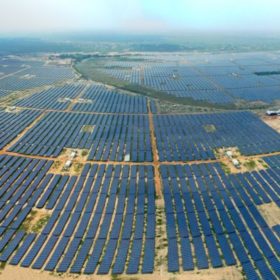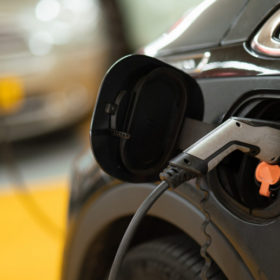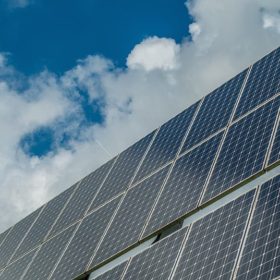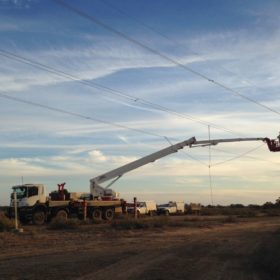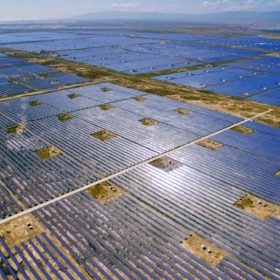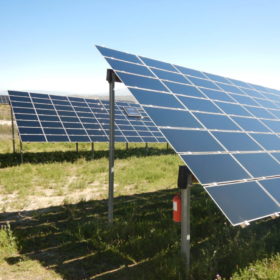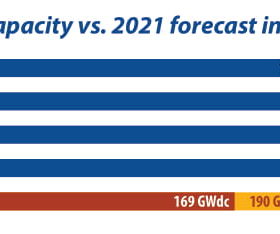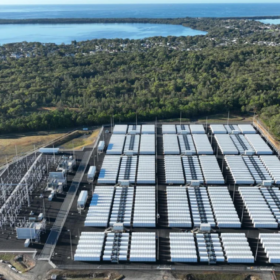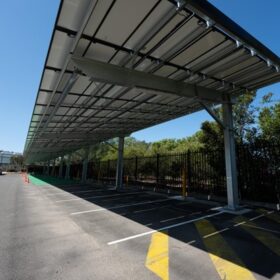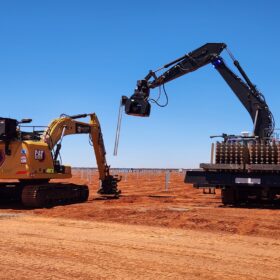Australia’s grid to be ready for instances of 100% renewables by 2025 to end asset constraints, AEMO boss clarifies
In his first public address, the newly appointed head of the Australian Energy Market Operator significantly upped the Operator’s ambitions for renewable penetrations in the grid, conveying the importance of no longer constraining what he called ‘zero cost’ renewable energy assets.
SA Water deploys AI-powered drone technology to monitor its vast solar assets
SA Water, one of the largest water utilities in Australia and most ambitious when it comes to renewable energy, has partnered with aerial solar inspection and data analysis company, Above, to monitor the performance of its 360,000+ solar panels.
India could add 8.5 GW of solar in FY2022
Solar capacity addition in the fiscal year 2021-22 will surge, led by a strong project pipeline. Tariffs will go up amid rising module prices but will remain competitive at below INR 3/kWh (US$ 0.040/kWh).
ANU opens new lab dedicated to testing distributed energy resources
The Australian National University today opened its Distributed Energy Resources Lab, dedicated to researching and testing technologies including batteries, solar panels and electric vehicles which it says will “underpin the energy grids of the future”.
Aussie-headed fuel cell vehicle company inks deal with zinc giant, laying ‘foundation for an emissions-free future’
Hydrogen vehicle maker, Hyzon Motors, has signed an agreement to deliver five fuel cell-powered heavy-duty trucks to Ark Energy Corporation, the Australian subsidiary of the world’s largest zinc, lead, and silver producer, Korea Zinc Ltd.
‘Lack of objections should mean permits are automatically granted for solar’
The question of overly complicated, time-consuming permitting processes again raised its head at a two-day online event held by the Global Solar Council to examine how to accelerate deployment of photovoltaics.
AEMC labels new connection rule ‘win-win’ for large-scale projects
A major hurdle confronting large-scale solar and wind projects in Australia has been addressed with the Australian Energy Market Commission fast-tracking a rule change governing how electricity generators connect to the grid.
China’s solar PV demand could ‘effortlessly’ surpass 100 GW in 2022 as production overcapacity predicted
According to Asia Europe Clean Energy (Solar) Advisory Co. Ltd, demand for solar PV in China could “effortlessly” surpass 100 GW in 2022, following a year of “flat” demand in 2021. It adds that a “massive overcapacity” situation in the production sector is looming. Meanwhile, the distributed solar PV market is on track for huge growth, with potential for annual demand to reach upwards of 20 GW+ from next year.
When does revamping pay off?
With projects in many PV markets ageing past the 10-year mark – with major leaps in technology having occurred in that time – revamping is a popular topic among asset owners. Pv magazine spoke with Asier Ukar, general manager of the Spanish subsidiary of German testing company PI Berlin, to uncover the benefits of revamping PV projects with new components and also to examine the challenges and risks involved.
Sunday read: Firm foundations on shifting sands
Unprecedented capacity expansions and massive technology changes, all happening at a frantic pace, signal that PV is entering the terawatt era. However, challenges in supply and demand imbalances across the value chain, combined with emerging technical and quality risks, require detailed analysis and due diligence from buyers to avoid pitfalls, according to George Touloupas, Joseph Johnson, and Aditya Vardhan from Clean Energy Associates.


